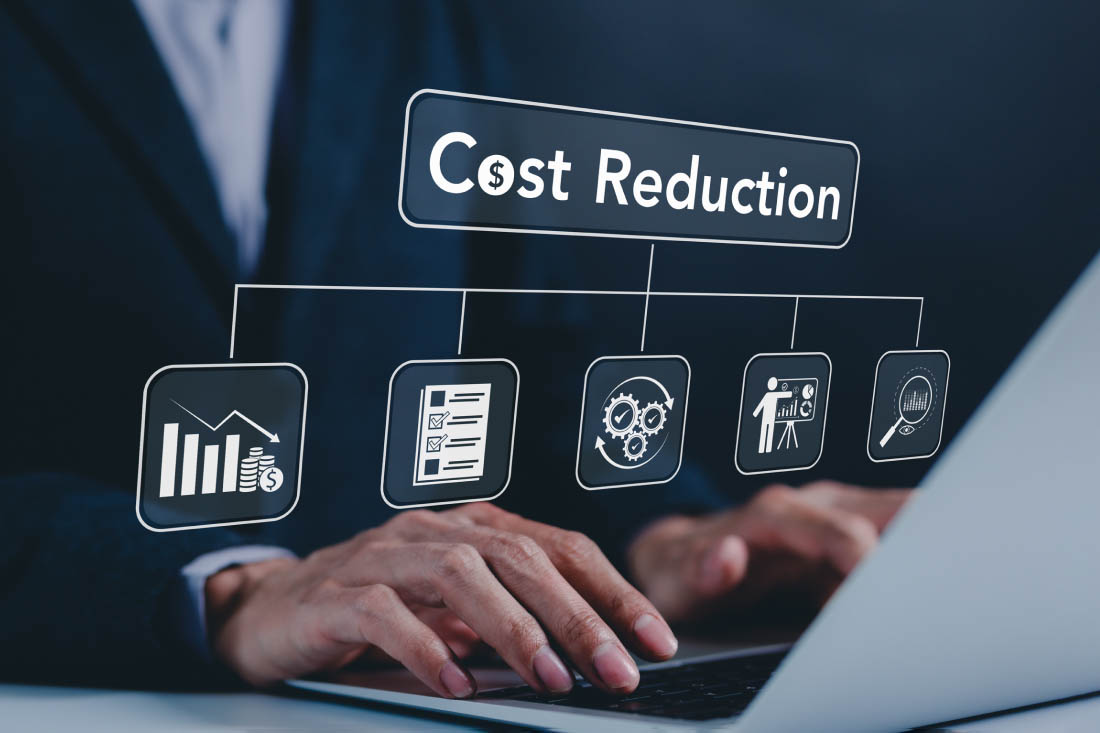Workplace productivity is the amount of work employees can complete in a given amount of time. It’s a measure that incorporates output and efficiency to understand the effectiveness of individuals or teams in supporting business objectives. Improving workplace productivity requires finding ways to optimize processes, using technology more efficiently, and motivating your people.
Workplace productivity plays an essential role in any organization’s success. When employees are productive, the organization’s overall performance, profitability and customer satisfaction improve. To ensure high performance, organizations need to prioritize workplace productivity and implement strategies to consistently improve it. Here are 10 tips to increase workplace productivity.
1. Establish clear goals and objectives
The most effective way to increase workplace productivity is to establish clear goals and objectives. This includes setting measurable goals that are aligned with the overall mission and vision of the organization. Goals should be specific, measurable, achievable, relevant and time-bound. When goals and objectives are clear, employees will know what’s expected of them and can focus their efforts in the right direction.
It’s important to ensure goals are realistic and achievable. If goals are too ambitious, employees may become overwhelmed and discouraged. Additionally, it’s important to provide employees with the resources and support they need to reach their goals. This could include additional training, access to technology, or additional staff.
By providing employees with the necessary resources, they will be more likely to reach their goals and increase workplace productivity.
2. Prioritize tasks and assign deadlines
Once the goals are set, it is important to prioritize tasks and assign deadlines. This helps employees stay focused on the most important tasks and ensure that all projects are completed on time. Tasks should be assigned based on importance, urgency, difficulty and individual skills. When tasks are prioritized, employees will know what to focus on and how much time they need to devote to each task, making them more efficient and productive.
It is also important to provide employees with regular feedback on their progress. This will help them stay motivated and on track to complete their tasks.
3. Create a positive work environment
Creating a positive work environment is essential for increasing productivity. This includes having respectful interactions among team members and providing feedback to employees in a constructive manner. It’s also important to recognize and reward employees for their hard work. A positive work environment encourages employees to stay motivated and work harder.
Creating a positive work environment also involves creating a safe and comfortable space for employees to work in. This includes providing adequate lighting, comfortable furniture and a clean and organized workspace. By creating a positive work environment, employers can foster a culture of greater productivity and collaboration.
4. Encourage collaboration
Encouraging collaboration between team members is also key to improving productivity in the workplace. Collaboration allows employees to share ideas in real time, brainstorm solutions and problem solve together to achieve better results. Collaboration also helps break down silos between departments and encourages a sense of unity and team spirit.
In addition, collaboration can help foster a culture of innovation and creativity. By working together, employees can come up with new ideas and approaches that can help the organization move forward. Collaboration also helps to build trust between team members, which can lead to better communication and collaboration in the future. But sometimes collaboration and the tools that enable it can be a source of distraction.
With a workforce analytics platform — like ActivTrak — you can see if collaboration is working for or against your team’s productivity. In fact, according to ActivTrak’s 2022 State of the Workplace Report, employees spend up to 33% of their days in collaboration tools and they are the number one source of focus disruptions. Collaboration time in ActivTrak is the amount of time a person spends engaged on chat & messaging or meeting software applications, like Slack, Zoom, Microsoft Teams and more. It’s important for leaders to understand how collaboration is affecting their teams to better address the possible negative effects and to celebrate the positive ones.
5. Utilize technology to streamline processes
Using technology to streamline processes is an effective way to increase workplace productivity. Technology boosts productivity by automating mundane tasks, simplifying complex processes and improving communication and collaboration between team members. Automating processes also frees up employee time for more deep work, which is typically more valuable.
When implementing technology to streamline processes, it is important to consider the cost of the technology, the time it will take to implement and the potential benefits. Additionally, it is important to ensure that the technology is secure and compliant with any relevant regulations. By taking the time to properly evaluate the technology and its potential impact, organizations can ensure that they are making the best use of their resources.
With the Technology Usage report in ActivTrak, you can easily see what technology your teams actually use — and what they don’t. Get immediate visibility into tools with low adoption, apps to consolidate, and much more. This report is especially effective when needing to cut costs or to rightsize your investments based on actual usage.
6. Implement flexible working arrangements
Flexible working arrangements can help increase workplace productivity by allowing employees to work when they are most productive. Flexible working arrangements can include hybrid or remote work, flexible hours, job sharing, or allowing employees to work from an alternative location. This helps create a more balanced work-life balance for employees and improve their overall productivity.
In addition to increasing productivity, flexible working arrangements can also help to reduce employee stress levels. By allowing employees to work when they are most comfortable and productive, they can avoid feeling overwhelmed and overworked. This can lead to improved morale and job satisfaction, which can further increase productivity.
With ActivTrak’s Location Insights, understand where your employees work best — in-office, remote or hybrid — without capturing private geo-location information. Verify your team adheres to your workplace policy (e.g. 2 days a week in the office) or reassess what it should be based on their behavior and productivity. Plus, learn how many employees use your office to determine how much space you really need — giving you the opportunity to rightsize any real estate investment.
7. Take regular breaks to recharge and refocus
Taking regular breaks throughout the day is important for maintaining a high level of productivity. Breaks give employees the chance to recharge their batteries and refocus on their tasks. It’s important to give employees enough time to take breaks during the day so that they don’t become overwhelmed or burned out.
Encouraging employees to take regular breaks can also help reduce stress levels and improve morale. Breaks can be used to take a walk, grab a snack or just take a few minutes to relax and clear your head. Regular breaks can help create a more positive and productive work environment.
Keep a pulse on burnout risk with easy-to-understand comparisons of working hours vs. healthy thresholds that you define with ActivTrak’s Workload Balance Dashboard. View spikes or consistently high working hours to understand who’s at risk for burnout. And conversely, identify those with low levels of engagement or that could be at risk for quiet quitting. Get the whole picture at-a-glance with team summaries to see how many team members are in a healthy range vs. over- or under-utilized.
8. Develop effective communication strategies
In order for teams to be productive, effective communication strategies must be in place. Employees need to communicate effectively with each other and with management. This includes having regular meetings to discuss progress and setting up systems for communication such as instant messaging or video conferencing. These help teams stay informed and on task so they can maximize workplace productivity.
It’s also important to ensure everyone is aware of the communication strategies in place. Provide training and resources to employees so they understand how to use the systems and how to communicate effectively. Additionally, give feedback to employees on their communication skills so they continue to improve.
9. Limit distractions and unnecessary meetings
According to Zippia, there are an average of 60 distractions per 8-hour workday and it takes employees an average of 23 minutes and 15 seconds to regain focus after a distraction. It’s impossible to eliminate distractions, but there are many strategies you can use to reduce them. One of the most common distractions is excessive email notifications, as The Guardian notes that the average office worker receives 121 emails and sends 40 each day. Instead of constantly jumping in and out of tasks to check and respond to emails, encourage employees to pause notifications or work in focus blocks.
Another common distraction is frequent, and sometimes unnecessary meetings. A report by North Carolina Chancellor professor and award-winning author Dr. Steven Rogelberg found that almost a third of organizational meetings are unnecessary. Excessive meetings disrupt workflows, take up valuable time, and can be a source of frustration among otherwise engaged employees.
Focus on reducing meetings to only the essential ones. If something can be communicated in an email, do that instead of scheduling a meeting or phone call that pulls employees out of their focus time. Another popular approach is to collaborate asynchronously in a shared working doc, so people can contribute regardless of schedule or time zone.
10. Set clear expectations for employees
Finally, it’s essential to set clear expectations for employees. It’s important that employees understand what is expected of them in terms of productivity, performance goals and deadlines. Doing this helps ensure everyone is on the same page and tasks are completed efficiently.
When setting expectations, be specific and provide employees with detailed instructions. This helps ensure employees understand exactly what’s expected of them and can complete their tasks in a timely manner.
Increase workplace productivity within your organization
Organizations who put these 10 tips into practice can increase workplace productivity and improve their overall performance. Establish clear goals and objectives, prioritize tasks, create a positive work environment, encourage collaboration, use technology to streamline processes, implement flexible working arrangements, support regular breaks, develop effective communication strategies and set clear expectations for employees.
Whenever you implement organizational changes — even best practices like the ones above — it’s important to understand the actual impact on employees. That’s where ActivTrak’s Impact Analysis comes in. Whether you need to learn the impact of one-time events (e.g. a leadership change or reduction in force), want to run A/B tests (e.g. try new programs or technology before implementing more broadly), or conduct side-by-side comparisons, Impact Analysis helps you understand what’s driving positive results and where intervention may be needed.
Request a free demo and discover how the insights can help you increase workplace productivity.





